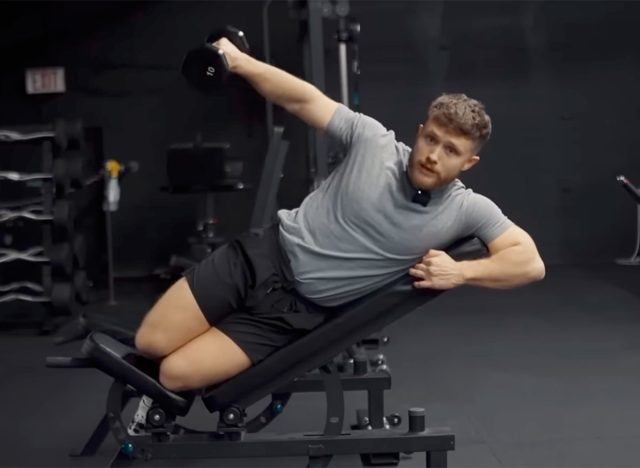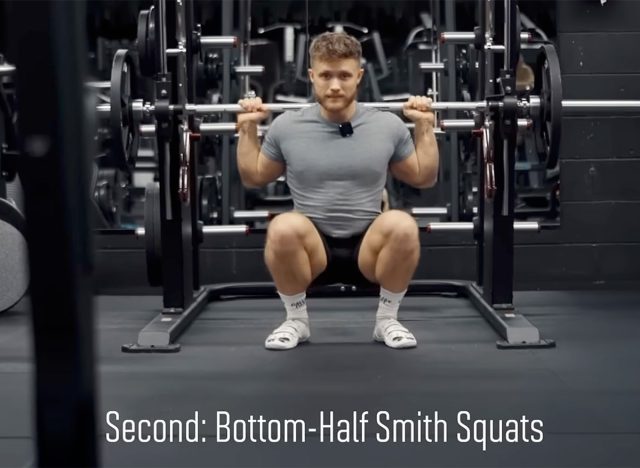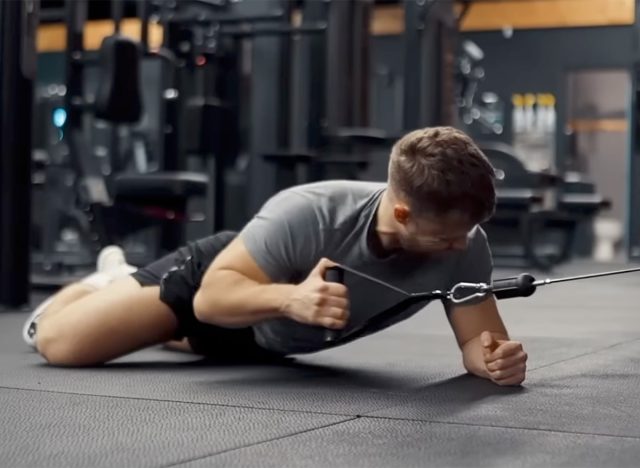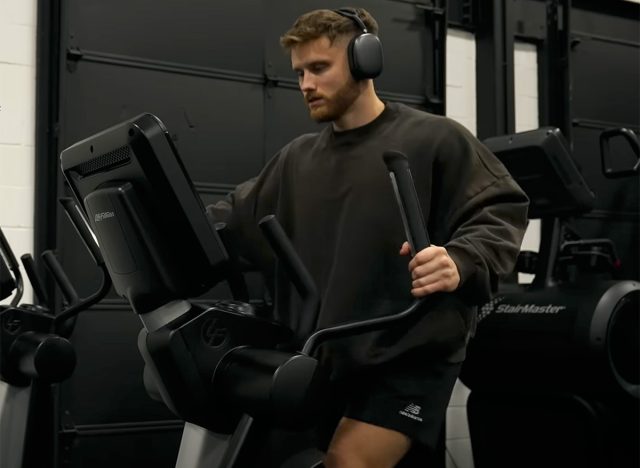3 New Exercises You Should Try From Jeff Nippard
Do you want to get fit for summer? One fitness expert claims these three exercises will help you achieve your body goals. Jeff Nippard, a Canadian natural pro bodybuilder and internationally qualified powerlifter, has a BSc in biochemistry/chemistry and a passion for science. He has amassed a large following on social media by sharing his science-backed diet and fitness tips with his 4.4 million YouTube subscribers. In a new video, he reveals "three new exercises." Here is everything you need to know to do them – and some other habits that help keep him in shape.
Incline Lateral Raise

First up, a "meadow style" incline lateral raise, "where you alternate between going behind your back and in front of your body," he says. "These are so good because by lying against an incline bench, you get most resistance from the dumbbell while you're delt is most stretched.
Bottom Half Smith Squats

The second exercise is bottom half smith squats. "These are brutal because you never get to rest at full walkout," he explains. "Your quads are just continuously hammered in the deep stretch. Actually, I somewhat look forward to doing these though. They're a fun new challenge each week."
RELATED: Rebecca Louise Shares 10-Minute Toned Upper Body Workout For Slender Arms
Moto Cable Rows

The third exercise he does is moto cable rows. "Because your whole body is braced against the floor, these give a very secure feel, and because this cable is free to move, you can lock into the plane of motion where you feel your lats the best for me. That's with my elbow more tucked into my side," he says.
Science-Based Fitness Approach

Nippard takes a science-based approach to fitness. In one Instagram post, he called it "super interesting," 40 percent of his audience would consider their training more "bro" than science-based. "For me, all science-based training means is that you use science to build the foundation of your training," he explained. That means you:
- Train hard
- Do enough volume (~5-15 sets per muscle per week)
- Use good technique (full range of motion with stretch-emphasis and control the negative)
- Use progressive overload (add some weight or reps over time)
- Use a variety of exercises
Here Is What He Eats Before and After Workouts

In another Instagram post, he discussed his diet before and after workouts. Pre-workout, Nippard has a bowl of jasmine rice, ground turkey, sour cream cheese, sriracha, blueberries, and a kiwi. "The latest research shows that simply not being hungry during your workout is the most important factor for pre-workout nutrition. Rather than nitpicking food sources or macro ratios, I'll chill for about an hour to let that digest," he says. Post-workout, he has a shake with 50 grams of protein.
"Now, there's no need to stress about the anabolic window, but this shake does make it easier for me to hit my daily protein target of 150 grams," Nippard explains. "A few hours later, I'll have a chicken sandwich made with ancient grains, bread, light, mayo, lettuce, rotisserie chicken, and a cheddar cheese slice with some crispy mini rice cakes and raspberries."
💪🔥Body Booster: Adding new exercises to your routine can keep things fresh and interesting, helping you to avoid boredom during your workouts. And if you enjoyed this article, don't miss This Is Exactly How to Lose Body Fat This Year.





